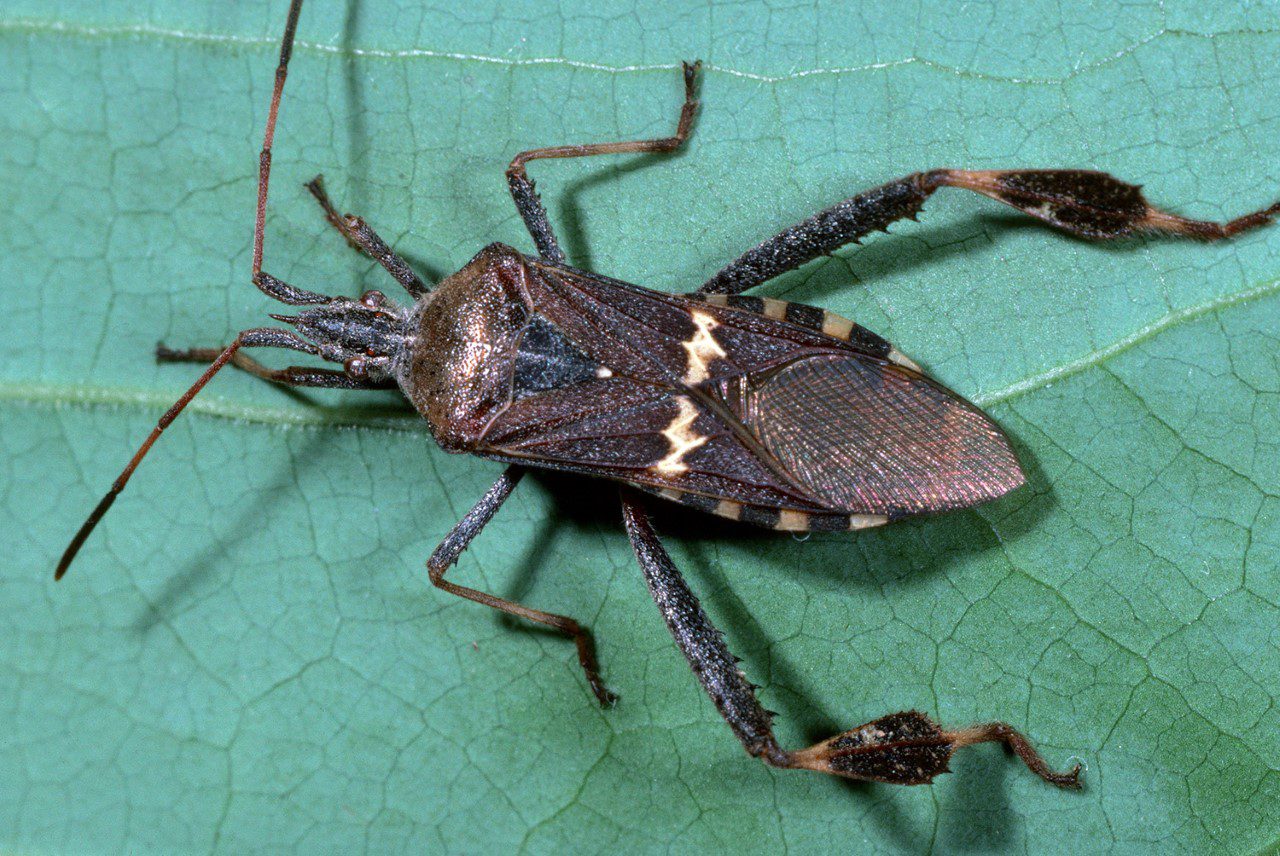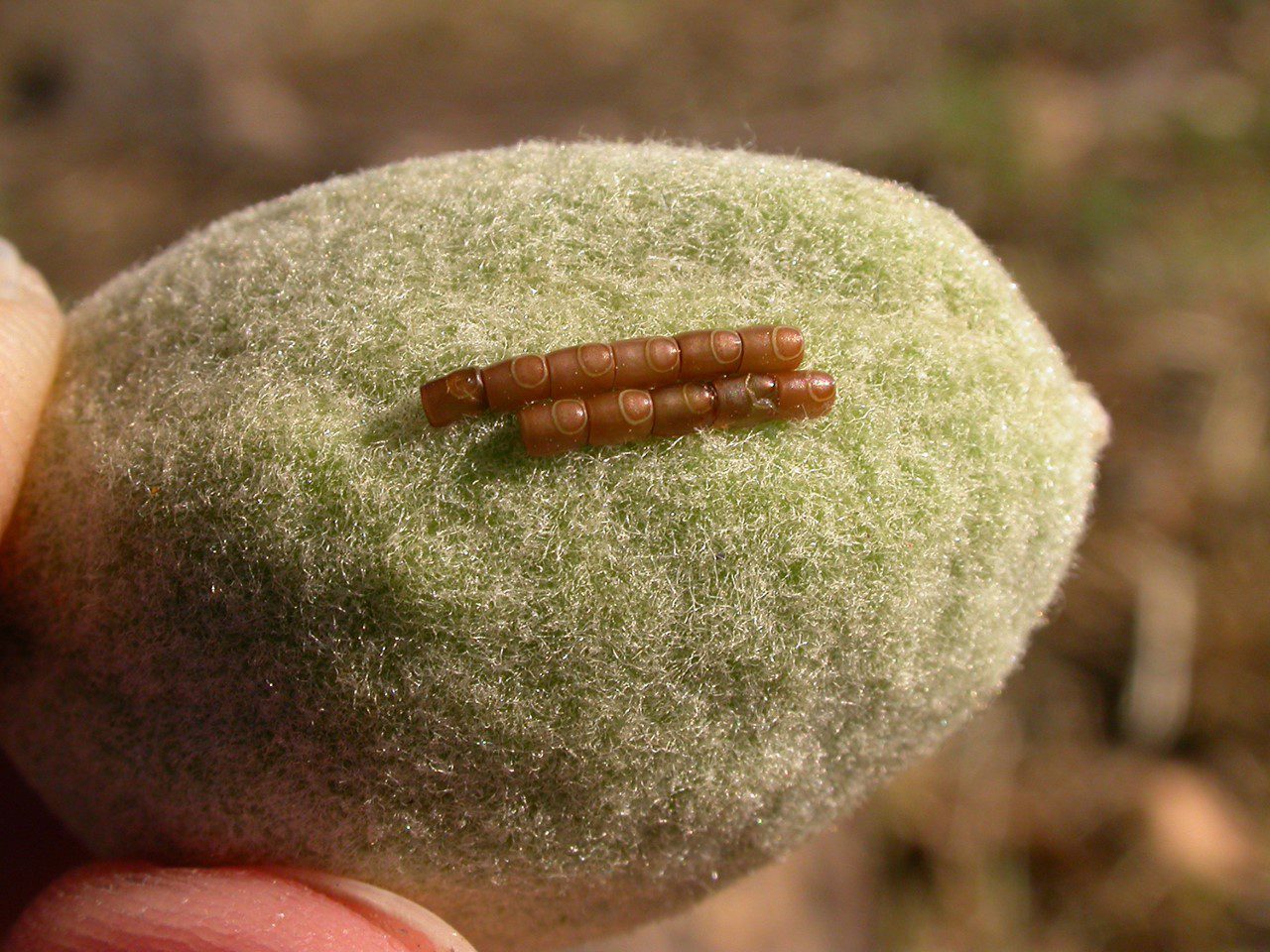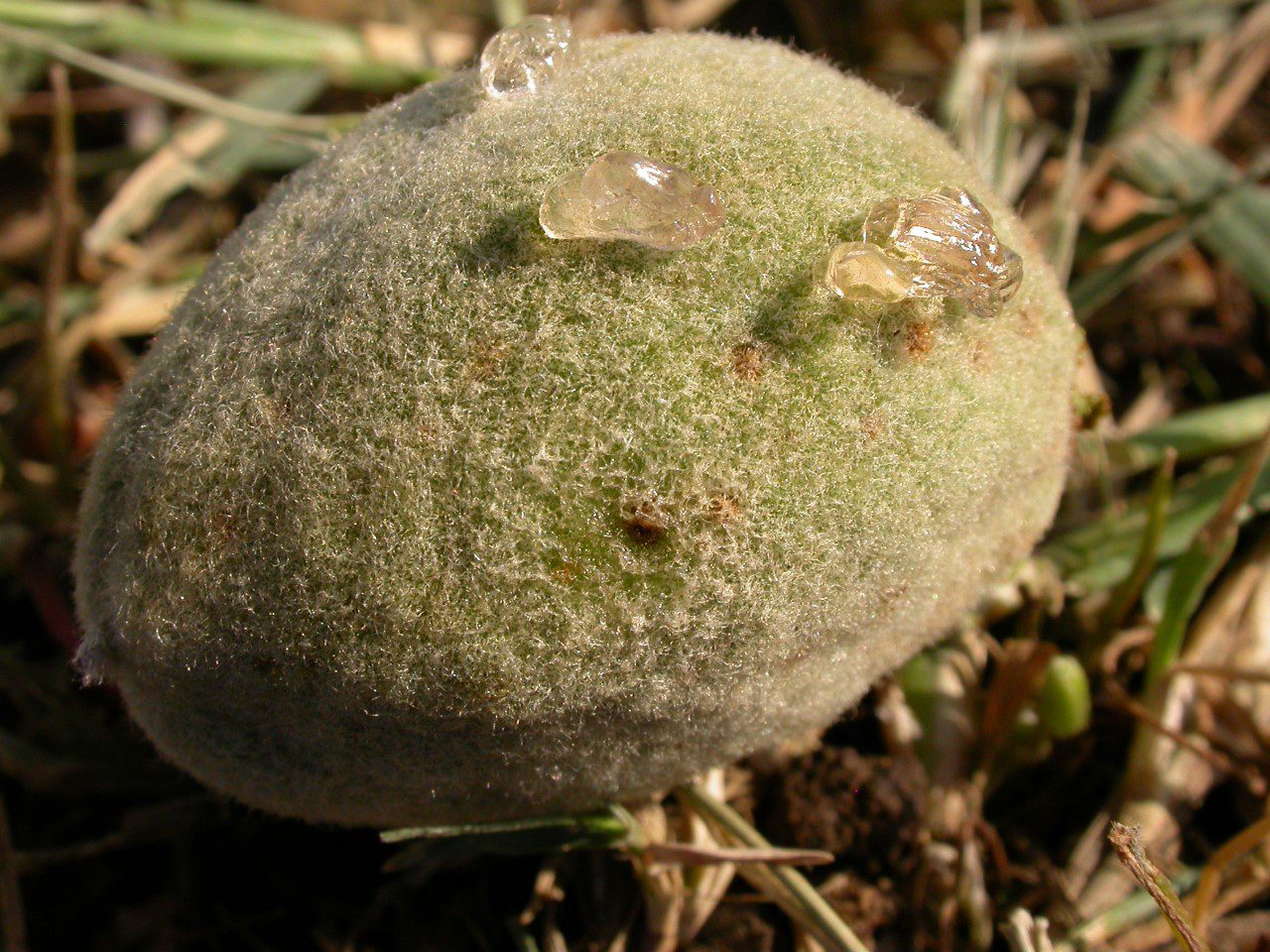
Leaffooted bug infestations in almond orchards continue to occur, possibly due to increased use of softer, more selective pesticides rather than organophosphate materials.
UCCE Orchard Crops Farm Advisor in Madera County Phoebe Gordon said LFB damage in orchards is sporadic. If this pest has been present in previous years and damage has been confirmed, scouting for adult LFB, eggs and nymphs should begin March. Due to the large size of this pest, adult LFB are easy to spot if they are present in the orchard. Sampling for LFB nymphs can be done with a beating tray by holding it under nut clusters while striking a limb sharply. Nymphs will drop into the tray while adult LFB will fly away. Morning-time sampling is recommended as the insects are less active. This is also a good time to scout for LFB egg masses on leaves and twigs.

Pheromone lures and traps developed for navel orangeworm monitoring have not yet been developed for LFB.
UC IPM guidelines report that if nymphs are present (one nymph per 15 to 20 beats), early season control may be necessary. The UC IPM Guidelines has information for treatment decisions.
Both LFB and stink bugs damage nuts by probing with needle-like mouthparts that results in gumming on the hull. Gordon said LFB damage in almonds becomes visible in March. Stink bug damage is more common in May and June.
Almonds that are damaged by LFB feeding will drop early in the growing season. Gordon said dropped nuts should be examined to determine the cause. Puncture wounds in the hull are signs of plant bug feeding. Gumming on the hull can be due to other causes. Adult LFB feeding can cause black spots and other damage to kernels after shell hardening.

Understanding the biology and life cycle of LFB can help with management, though effective control for adult LFB is not practical in many cases. Natural control can occur if populations of egg parasitoids build or if winter temperatures are extremely cold, affecting the adult overwintering population.
Leaffooted bugs overwinter in the orchard in plant debris or cracks in tree bark. Outside the orchard, they can survive in protected areas. The adults begin to disperse in March, seeking food sources. They lay eggs in spring on leaves, twigs and nuts.

Cecilia Parsons
Cecilia Parsons has spent the past 30 years covering agriculture in California for a variety of newspapers, magazines and organizations. During that time she has been fortunate to witness some of the important events that have shaped this diverse industry and worked hard to examine and explain these events for readers.
When Cecilia first moved to the San Joaquin Valley in 1976, her first journalism job was at a small daily newspaper where she covered “farm news.” From there she branched out to writing for a dairy magazine and a regional weekly agriculture publication.
Cecilia is part of a farming family from the rural community of Ducor where she also raises purebred sheep and is attempting to master versatility ranch horse riding.










